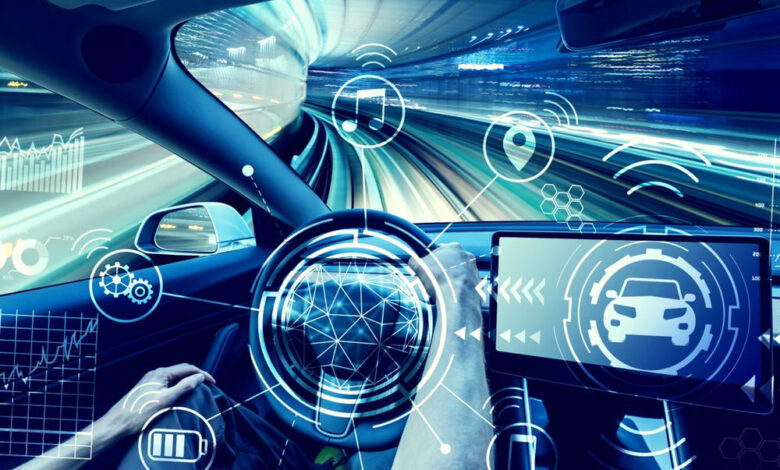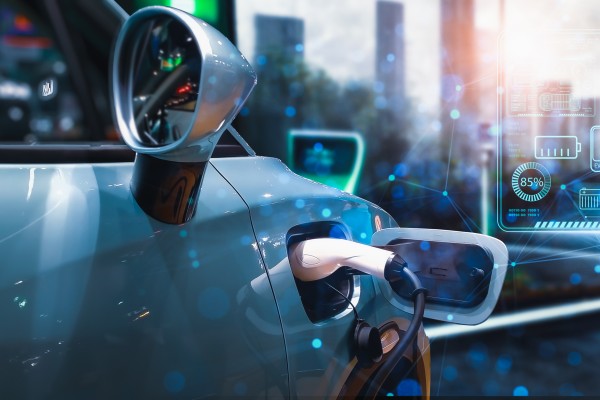The Future of Mobility Gains A Global Shift

The world is on the brink of a revolution in how we move. For over a century, the internal combustion engine has dominated personal transportation, shaping our cities and our lifestyles. However, a confluence of technological advancements, environmental pressures, and changing societal needs is paving the way for a radical transformation. The future of mobility isn’t just about faster or more efficient cars; it’s about a complete rethinking of transportation, from the vehicles we use to the infrastructure that supports them. This article will explore the key pillars of this global shift, including electrification, automation, connectivity, and the rise of shared services. We will delve into the challenges and opportunities that lie ahead, from building the necessary infrastructure to addressing the ethical and social implications of a new era of movement.
Electrification

The most significant change on the horizon is the shift from fossil fuels to electricity. Electric vehicles (EVs) are no longer a niche market; they are rapidly becoming the mainstream choice for consumers and businesses alike. This transition is being driven by several key factors:
A. Environmental Imperative
The urgent need to combat climate change and reduce air pollution is a primary motivator. EVs produce zero tailpipe emissions, contributing to cleaner air in urban areas and a significant reduction in greenhouse gas emissions when powered by renewable energy sources. This is a crucial step toward achieving global climate goals.
B. Technological Advancements
Advances in battery technology have been a game-changer. Batteries are becoming more energy-dense, cheaper, and faster to charge. This has addressed two of the biggest hurdles to EV adoption: range anxiety and high purchase costs. The development of solid-state batteries and other next-generation technologies promises to further accelerate this progress.
C. Government Support
Governments worldwide are playing a crucial role by offering subsidies, tax credits, and other incentives to encourage EV purchases. They are also investing heavily in charging infrastructure, recognizing that a robust network is essential for widespread adoption.
D. The Rise of the Gigafactory
The massive production scale of battery factories, often referred to as “gigafactories,” is driving down costs and ensuring a steady supply of batteries for the growing EV market. This industrial-scale production is a critical component of the electrification transition.
The electrification of transport extends beyond cars to electric buses, trucks, scooters, and even electric aircraft. This comprehensive shift will require a massive overhaul of our energy grids and a fundamental change in how we power our lives.
Automation
Perhaps the most futuristic aspect of the mobility revolution is the rise of autonomous vehicles (AVs), or self-driving cars. This technology promises to transform transportation by making it safer, more efficient, and more accessible.
A. Levels of Automation
The Society of Automotive Engineers (SAE) has defined six levels of driving automation, from Level 0 (no automation) to Level 5 (full automation). We are currently in a transition period, with many new cars offering Level 2 features like adaptive cruise control and lane-keeping assistance. The ultimate goal is Level 4 and 5, where the vehicle can handle all driving tasks in specific or all conditions, respectively.
B. The Technology Behind the Wheel
Self-driving cars rely on a complex suite of technologies, including:
- LiDAR (Light Detection and Ranging): A system that uses lasers to create a detailed, 3D map of the car’s surroundings.
- Radar: Uses radio waves to detect the speed and distance of objects, even in adverse weather conditions.
- Cameras: Provides high-resolution visual data, allowing the car to “see” and identify objects like pedestrians, road signs, and traffic lights.
- AI and Machine Learning: The brain of the operation. These algorithms process the data from all the sensors to make real-time decisions, from accelerating and braking to navigating complex intersections.
C. Benefits of Automation
The potential benefits of widespread AV adoption are enormous. It could dramatically reduce traffic accidents, as human error is the cause of over 90% of all collisions. It could also lead to more efficient traffic flow, reducing congestion and travel times. Furthermore, AVs could provide a new level of mobility for the elderly, disabled, and others who are unable to drive, enhancing their independence and quality of life.
However, significant challenges remain, including the need for robust regulatory frameworks, public trust, and the development of infallible technology that can handle the unpredictable nature of real-world driving.
Connectivity and the Smart City
The future of mobility is not just about the vehicles themselves, but about how they interact with each other and with the surrounding environment. Connectivity is the glue that holds this new ecosystem together.
A. Vehicle-to-Everything (V2X) Communication
This technology allows vehicles to communicate with other vehicles (V2V), infrastructure (V2I), pedestrians (V2P), and the cloud (V2C). This constant exchange of data enables a host of new features:
- Traffic Management: Vehicles can be routed to avoid congestion and accidents, leading to smoother traffic flow.
- Enhanced Safety: A car can warn a driver of an approaching emergency vehicle or a pedestrian about to cross the road, even if they are out of sight.
- Efficient Parking: Cars can be automatically guided to available parking spots, saving time and reducing circling.
B. The Rise of the Smart City
The data generated by connected vehicles is a critical component of the smart city concept. This data can be used to optimize everything from public transportation schedules to emergency response routes. Smart cities will feature intelligent traffic lights that adjust to real-time traffic flow, smart parking systems, and integrated public transit networks that are more efficient and convenient than ever before.
The proliferation of 5G and future networks will be essential for supporting the massive data transfer required for this interconnected future. The seamless flow of information will transform our cities into intelligent, responsive ecosystems.
The Shared Mobility Ecosystem
The traditional model of car ownership is being challenged by the rise of shared mobility services. These services offer a more flexible, affordable, and sustainable alternative to owning a private vehicle, particularly in urban areas.
A. Ride-Sharing and Ride-Hailing
Services like Uber and Lyft have already transformed urban transportation, providing on-demand rides that are often more convenient than public transit or traditional taxis. This model can be made even more efficient with the introduction of autonomous vehicles, which could dramatically reduce the cost of a ride.
B. Car-Sharing and Subscription Services
Car-sharing services (e.g., Zipcar) allow users to access a vehicle for short periods without the commitment of ownership. Car subscription services are a more recent development, offering a single monthly fee that covers the vehicle, insurance, and maintenance, providing a flexible alternative to traditional leasing or purchasing.
C. Micro-Mobility
The emergence of e-scooters, e-bikes, and other forms of micro-mobility has filled a crucial gap in urban transportation, providing a convenient and eco-friendly solution for short trips, often referred to as the “last mile” of a journey.
This shift toward a shared mobility ecosystem has the potential to significantly reduce the number of cars on the road, freeing up valuable urban space currently occupied by parking lots and congested streets.
The Challenges and Opportunities Ahead

The transition to this new mobility paradigm will not be without its challenges. There are significant hurdles to overcome in technology, policy, and human behavior.
A. Infrastructure Development
The current transportation infrastructure, built for fossil-fuel vehicles, is not equipped for the future. We need to:
- Build a Comprehensive Charging Network: A dense and reliable network of charging stations is essential for mass EV adoption. This includes public chargers, workplace chargers, and home charging solutions.
- Upgrade the Grid: The electric grid needs to be upgraded to handle the massive increase in demand for electricity, especially during peak charging times.
- Develop Smart Roads: Future roads may need to communicate with autonomous vehicles, provide wireless charging, and incorporate sensors for real-time traffic monitoring.
B. Policy and Regulation
Governments will need to create new policies and regulations to govern this new era of mobility. This includes:
- Safety Standards for Autonomous Vehicles: Establishing clear guidelines for the testing, deployment, and operation of AVs to ensure public safety.
- Data Privacy: Defining who owns the data generated by connected vehicles and how it can be used, ensuring user privacy and security.
- Rethinking Urban Planning: Designing cities that prioritize pedestrians, cyclists, and public transit over private cars, a concept often referred to as “urban mobility-as-a-service.”
C. The Human Factor
Public perception and trust are critical. People need to feel safe and confident in self-driving technology. The workforce will also need to be retrained, as jobs related to driving and maintenance will change significantly. The human element, including our willingness to adapt and embrace these new technologies, will ultimately determine the pace and success of this revolution.
Conclusion
The future of mobility is not a singular event but a complex and interconnected revolution driven by a convergence of groundbreaking technologies and a global commitment to a more sustainable and efficient world. The shift to electric vehicles is a fundamental step toward decarbonizing our transportation systems, a move that will have far-reaching environmental benefits for generations to come. This transition, fueled by rapid advancements in battery technology and government incentives, is already reshaping the automotive industry. Simultaneously, the rise of autonomous vehicles, powered by an intricate symphony of sensors and artificial intelligence, promises a future where roads are safer, traffic flows more smoothly, and mobility is accessible to everyone, regardless of their ability to drive. This technological leap is not just about convenience; it’s about saving lives and reclaiming urban spaces from gridlock and parking lots.
Furthermore, the integration of these smart, connected vehicles into an intelligent network is creating the blueprint for the smart city of tomorrow. Through V2X communication, our vehicles will not just move us from point A to B, but will act as nodes in a vast, data-driven ecosystem that optimizes every aspect of urban life, from traffic management to emergency response. This level of connectivity will enable a seamless, efficient, and responsive urban environment. The traditional model of car ownership is also being fundamentally challenged by the shared mobility ecosystem, which offers a flexible and sustainable alternative that can reduce the number of cars on the road and alleviate the pressure on urban infrastructure. However, as we stand on the cusp of this transformation, we must recognize that the journey is fraught with significant challenges. We must build the necessary infrastructure to support this new electric and autonomous future, from smart charging networks to upgraded power grids. We must also create robust regulatory frameworks to ensure safety, address data privacy concerns, and guide a just transition for the workforce. The most critical factor, however, will be the human one—our willingness to trust, adapt, and embrace these new ways of moving. The future of mobility is not just about what we drive; it’s about a fundamental reimagining of our cities, our lifestyles, and our relationship with the world around us, promising a more efficient, sustainable, and connected future for all.
